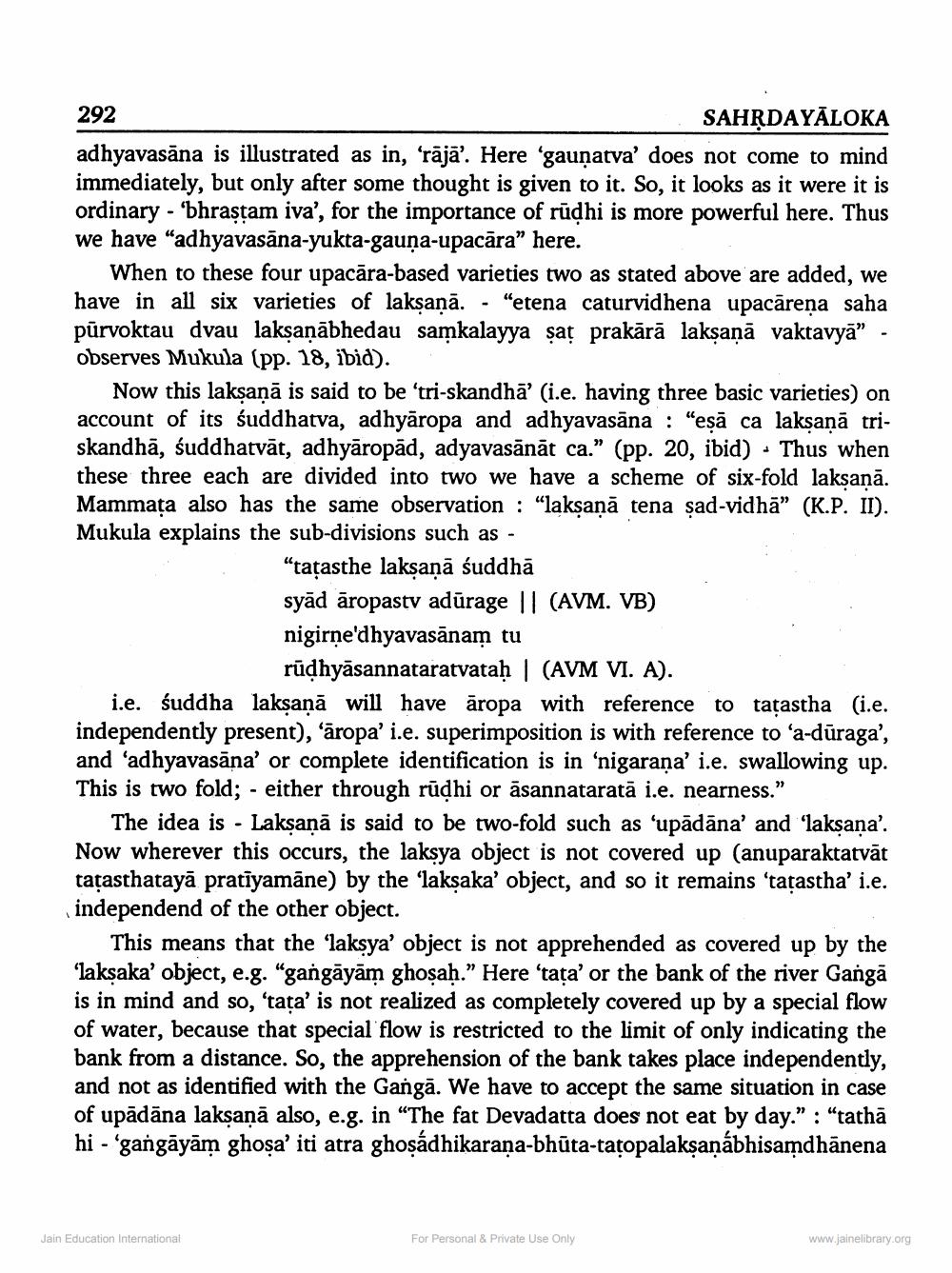________________
292
SAHRDAYĀLOKA adhyavasāna is illustrated as in, ‘rājā'. Here 'gaunatva' does not come to mind immediately, but only after some thought is given to it. So, it looks as it were it is ordinary - 'bhrastam iva', for the importance of rūdhi is more powerful here. Thus we have "adhyavasāna-yukta-gauņa-upacāra” here.
When to these four upacāra-based varieties two as stated above are added, we have in all six varieties of laksanā. - "etena caturvidhena upacārena saha pūrvoktau dvau laksanābhedau samkalayya sat prakārā laksanā vaktavyā" . observes Mukula (pp. 18, ibid).
Now this lakṣaṇā is said to be 'tri-skandhā (i.e. having three basic varieties) on account of its suddhatva, adhyāropa and adhyavasāna : "esā ca laksanā triskandhā, śuddhatvāt, adhyāropad, adyavasānāt ca.” (pp. 20. ibid) - Thus when these three each are divided into two we have a scheme of six-fold laksanā. Mammata also has the same observation : "laksana tena sad-vidhā" (K.P. II). Mukula explains the sub-divisions such as -
"tațasthe lakṣaṇā śuddhā syād āropastv adūrage || (AVM. VB) nigirne'dhyavasānam tu
rūdhyāsannataratvataḥ | (AVM VI. A). i.e. śuddha laksaņā will have āropa with reference to taţastha (i.e. independently present), 'āropa' i.e. superimposition is with reference to 'a-dūraga', and 'adhyavasāna' or complete identification is in 'nigarana' i.e. swallowing up. This is two fold; - either through rūdhi or asannataratā i.e. nearness.”
The idea is - Laksanā is said to be two-fold such as ‘upādāna' and 'laksana'. Now wherever this occurs, the laksya object is not covered up (anuparaktatvāt tatasthatayā pratiyamāne) by the 'laksaka' object, and so it remains 'tatastha' i.e. independend of the other object.
This means that the ‘laksya' object is not apprehended as covered up by the ‘laksaka' object, e.g. "gangāyām ghosah." Here 'tata' or the bank of the river Gangā is in mind and so, 'taţa' is not realized as completely covered up by a special flow of water, because that special flow is restricted to the limit of only indicating the bank from a distance. So, the apprehension of the bank takes place independently and not as identified with the Gangā. We have to accept the same situation in case of upādāna laksaņā also, e.g. in "The fat Devadatta does not eat by day.” : “tathā hi - 'gangāyām ghoșa' iti atra ghoṣadhikarana-bhūta-tatopalakṣaṇabhisamdhānena
Jain Education International
For Personal & Private Use Only
www.jainelibrary.org




